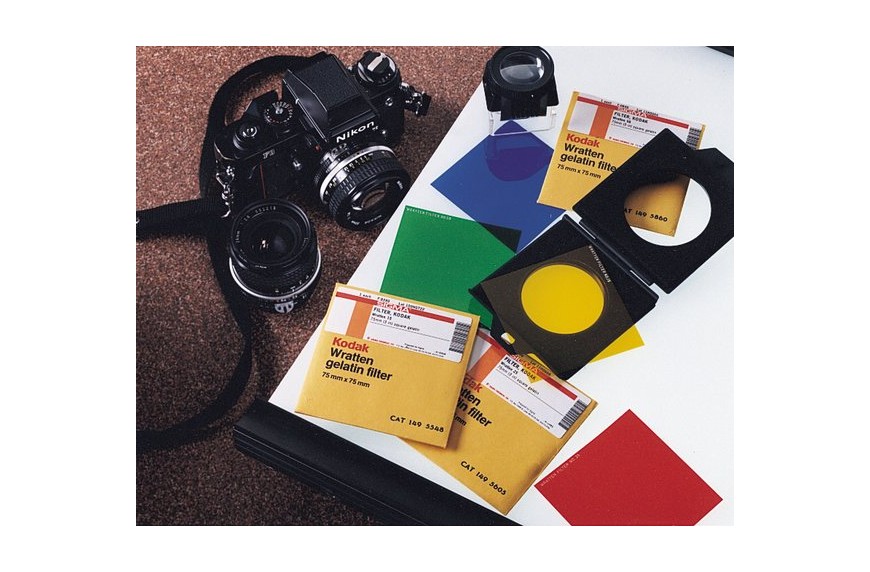The Photographic Filter: a Concise History
- Posted by
- Our News
- déc. 28, 2017
- 0 Comments
With regard to physics, we can claim that filtering is everywhere in photographic practices, since the early years of photography. The photographic material whatever its nature is only sensitive to some wavelengths, and old or modern lenses let only some visible or invisible spectrums go through their glass elements.
Since it is possible to manufacture these small and underestimated accessories with the development of the dye industry, the photographic filters have been used to enhance the technical capabilities of photographic processes. They have also permitted the development of modern photography in natural colour.
Mastering and optimizing the spectral sensitivity of photographic materials
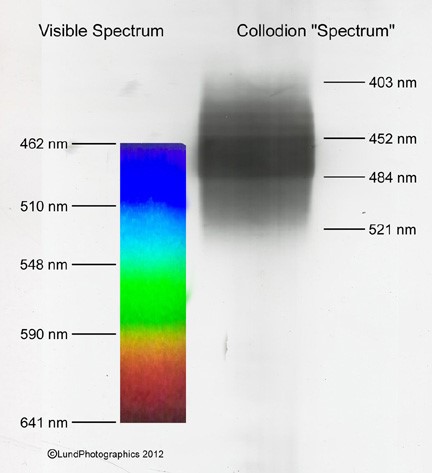
The sensitivity of photographic materials to visible light and beyond varied from the birth of photography in 1839 to the beginning of the twentieth century. The first processes such as the daguerreotype or the collodion wet plate process were not sensitive to the whole visible spectrum, but only to the ultraviolet and the blue visible spectrum. Consequently reproduced red objects or skin tones were darker than the result of what a modern black & white analogue film was “seeing”.
Average spectral sensitivity of the wet collodion plate, compared with the visible spectrum. Source: www.lundphotographics.com, Tips and techniques. Accessed September 20, 2017.
You can simulate the tone reproduction of these old processes by looking at the photographed scene through a dense blue filter: yellow or red colors will look very dark… From 1884 on, improvements in photographic emulsion making increased the photosensitivity in the blue and green areas. Photographic materials with this extended sensitivity in the visible spectrum were labelled as orthochromatic photographic emulsions.
Up to this point, the laboratory work for sensitization and development was easier as it was possible to use a red-orange lighting in the darkroom without fogging the film.
First colour processes, first filters
The first non-experimental photographic process in natural colours, the Autochrome plate, was released in 1907. Developed from a long research process by Louis and Auguste Lumière, the Autochrome plate used the principle of additive synthesis. A three-colour screen was put on a positive black & white emulsion and this “sandwich” was exposed together.
As the sensitivity of the plate was rather low, the photographer had to use a tripod. The manufacturing of the three-colour plate was highly complex. It involved the scientific knowledge of the chemistry of dyes, the making of proprietary industrial equipment and the colouration of… microscopic potato starches.
[Pears], Marcel HUBIN. 1 transparent positive photograph: autochrome plate, colour; 9 x 12 cm. Source: http://sfp.asso.fr/. © Société française de photographie - Droits réservés.
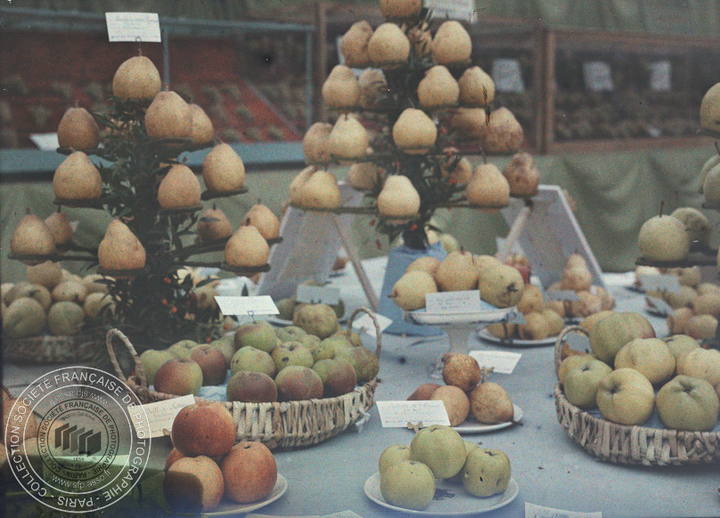
Despite its industrial success, the Autochrome plate had a poor colour rendering. It was too sensitive to violet and blue light. This is why Lumière always recommended the use of a specific yellow filter, “l’écran jaune Lumière”, with a particular absorption of blue light, to properly balance the colour reproduction of a photographic subject.
The Autochrome plate was manufactured during more than 20 years. During this period, the sensitivity of the plate to blue and violet light increased significantly. In 1921, Mr. Schitz, an Autochrome user, recommended the use of the Lumière yellow filter plus a yellow-orange filter, to correct the blue colour cast of the developed Autochromes.[1]
The same photographer even experimented the successive use of the Lumière yellow filter, the G filter from Wratten (a pure yellow filter) and the A filter from the same manufacturer (a pure red filter). It was not so easy to achieve a good colour rendering of landscapes and outdoor scenes at this early time…
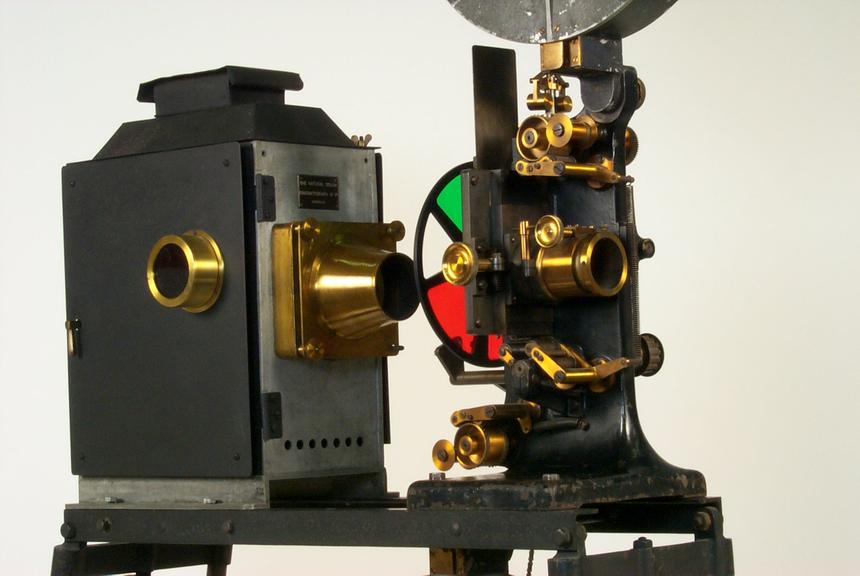
During the same period, inventors and companies were trying to develop a cinematographic process able to reproduce natural colours. But in early cinema, some prototypical processes were announced but were never finalized and released. Other processes, such as Kinemacolor, lenticular Kodacolor and the Keller-Dorian process, were introduced to the market but for a rather short period of exploitation. They all used the principle of additive synthesis, for which at least two different filters were necessary to simulate the complete visible spectrum: red, green and blue or similar colours.
A projector used for Kinemacolor film. Source: Science Museum Group. 1990-5036/3503. Science Museum Group Collection Online. Accessed September 28, 2017. https://collection.sciencemuseum.org.uk/objects/co8082095.
How does the Kinemacolor work during the projection? Source: Jack H. Coote, The Illustrated History of Colour Photography. Surbiton, Surrey: Fountain Press, 1993, 60.[2]
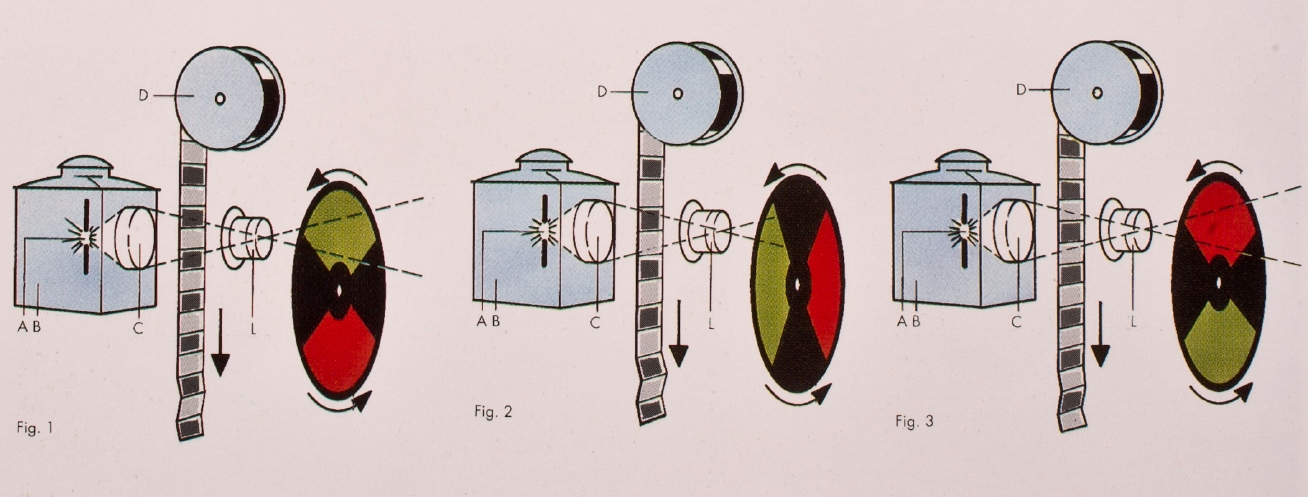
The Kinemacolor process, used between 1908 and 1915, required only two filters in red and green. During the research and development period, the inventors never managed to make it work by using three colours. The problem was the recording and projection material, unable to work with the rather high rate of 32 frames per second. Consequently, the two-colour system was unable to correctly reproduce cold colours such as blue or violet.
Regarding the projection, the spectral nature of the red and green filters was critical. Needless to say, the colour temperature of the light source used by the projector also influenced the final colour rendering of the Kinemacolor film… Depending on the chemical dyes used to make the filters, we can speculate that the colour of the filters was fading after a certain amount of use and that the operator had to frequently change the filters.
The lenticular Kodacolor process, released by Eastman Kodak in 1928 from a long-term research made by the independent researcher Rodolphe Berthon in France in the 1910s, and from the Keller-Dorian process, used another principle of colour reproduction. During the shooting, the camera lens was equipped with a special three-colour filter, made of a red, green and blue-violet stripes. The innovation was to project the filtered light coming from the scene onto a special panchromatic black & white film.[3] A side of the film was physically embossed, creating an array of tiny lenses. In this way, the film recorded the three responses in gray-scale value of the scene filtered respectively in red, green and blue-violet.
The principle of colour reproduction by the lenticular Kodacolor. Source: Kenneth Mees, “Amateur Cinematography and the Kodacolor Process,” Journal of the Franklin Institute 207, n°1 (January 1929): 13.
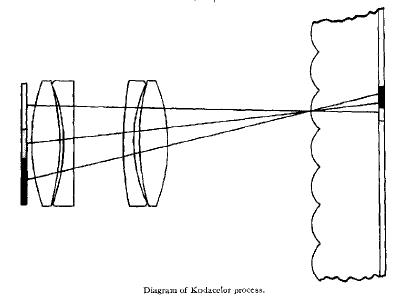

The projector used a similar three-colour filter to superimpose the 3 coloured responses of the scene and reproduce its natural colour. But this scientific principle of reproducing colour by addition was finally superseded by the subtractive colour technology, following the long-term development and release of… the famous three-colour Kodachrome.
A Kodacolor Filter Designed for a Kodascope Model B 16mm Projector. Source: Darren Nemeth website, accessed September 28, 2017. http://www.giantsquidaudiolab.com/kodacolor_page/kodacolor.html#makeyourfilter.
The three-colour Kodachrome was released as 16mm cine film in 1935, and in 1936 as 35mm film for photographic cameras. This extraordinary colour positive process would have never been possible without filtering techniques. Using the subtractive principle of light analysis, the Kodachrome “sandwich” was an assembly of three main superimposed layers. But each layer had to be only sensitive to a specific part of the visible light, and an intermediate yellow filter was used inside the multi-layered emulsion to subtract some wavelengths in the adjacent layers following the top one.
The first years of exploitation the chemical development of Kodachrome rolls was so complicated, with re-exposures using specific coloured light and the use of several selective bleaches, that it was simplified in 1938 by a member of the Kodak Research Laboratory in Rochester.

First Kodachrome processing (1935-1938) compared with new Kodachrome processing (from 1938). Source: Arnold Weissberger, “A Chemist's View of Color Photography: How Does Color Photography Work? What is Required of the Light-Sensitive Material? What is the Origin of the Image Dyes?” American Scientist 58, no. 6 (1970): 651.
Three-colour Kodachrome represented a visual revolution by simplifying the making of photographic stills in natural colour. Agfa, the German competitor of Eastman Kodak, introduced a similar colour slide in late 1936, the Agfacolor-Neu, with a different colour rendering due to the use of another chemical technologies.

Wolcott, Marion Post, photographer. Mountaineers and farmers trading mules and horses on "Jockey St.," near the Court House, Campton, Wolfe County, Ky. Campton Kentucky United States, September 1940. Kodachrome. Source: retrieved from the Library of Congress, https://www.loc.gov/item/2017877560/. (Accessed September 29, 2017.)
The development of Wratten and Wainwright and the first legendary filters
We don’t have many information about the origins of photographic and cine filter making. However, the best company to look at on this matter was the small British manufacturer of gelatino-bromide dry plates and filters Wratten and Wainwright. W&W was created in 1877 in London, starting to sell photographic chemicals, cameras and accessories. But the small company developed progressively its own production of gelatin dry plates. In 1906, the young photochemist Kenneth Mees was hired by the company as the joint managing director. The W&W dry plates had a very good reputation, but Mees was conscious that the company had to release new products to increase the rather low turnover. Thanks to his connections with the German dye industry, Mees was able to develop a panchromatic emulsion, so also sensitive to the green and red spectrum. But he also developed a range of coloured filters, necessary to expose the new panchromatic plates. Mees gave later an excellent description of the basic operations for filter making in 1906:
“Wratten & Wainwright were making a few yellow filters by a process devised by S.H. Wratten which has been very successful ever since. Gelatin dyed with tartrazin was coated upon plate glass, and after drying the gelatin coating was stripped from the glass. This film could be used either by itself as a gelatin filter or could be cemented between two pieces of thin white optical glass to form a glass filter, the cementing being done with Canada balsam.
In 1906 Meister, Lucius, and Brüning introduced a new yellow dye for light filters under the name Filter Yellow K. Publication of the absorption spectrum of this dye suggested that it was considerably better than tartrazin, particularly in its ultraviolet absorption, and the dye was adopted at Wratten & Wainwright. A set of filters was placed on the market and standardized as K-1, K-2, and K-3. The first two were yellow filters made from Filter Yellow K only, and the K-3 had mandarin orange dye in it in addition to make the filter a better compensator for orthochromatic rendering.”[4]
Soon, with all the dyes used or studied at Wratten & Wainwright for filter making, Mees was able to publish a complete atlas of absorption spectra, revealing in the publication the names of his German dye suppliers: Hoechst, Merck, Badische, Bayer, and Agfa among others.
Absorption spectra of W&W filters A, B, K1 and K2. Source: Kenneth Mees, An Atlas of Absorption Spectra, London, 1909, 57. https://archive.org/details/atlasofabsorptio00meesiala. (Accessed September 29, 2017.)
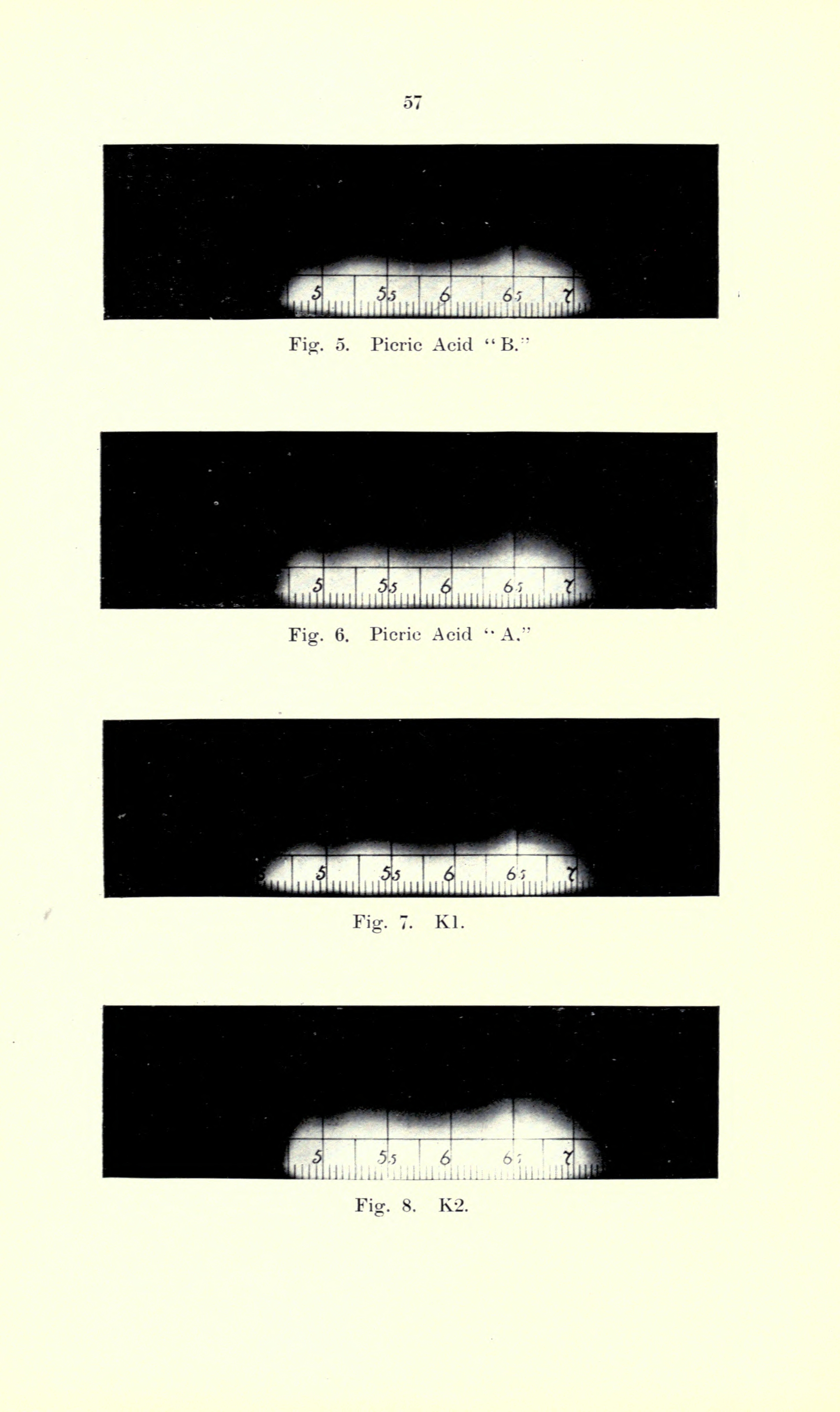
This increasing availability of dyes represented the start of the production of photographic filters which have been well-known by photographers up to the end of the twentieth century… But you may know them under the “Kodak Wratten” terminology. So why? In fact, considering the development of photography in the twentieth century, you have to think that Mees was one of the most important actors of photographic research. In 1909, George Eastman offered him the making and the management of the first Kodak Research Laboratory in Rochester.
Mees accepted the offer provided that Eastman also purchase Wratten & Wainwright, and the production of the famous filters moved to the US. Mees led Kodak Research up to the year 1955, and is directly responsible of the development and introduction of the lenticular Kodacolor, three-colour Kodachrome, astronomical plates, negative and positive Eastman colour films etc. etc. Well, ok. He did not invent digital photography (!), but he made so much for analogue photography in black and white or in natural colours that you should remember his name…

List of Kodak Wratten filters (extract), with the old designations K2 and K3. Source: Kodak Limited, Wratten Light Filters, first ed., London, 1953, 27. https://archive.org/details/WrattenLightFilters. (Accessed September 29, 2017.)
The use of filters in the analogue era, which has not ended yet…
Today, some companies still manufacture cine or photographic filters with a similar process used by W&W more than a century ago… They can also produce perfectly neutral density filters with modern technologies of the twenty-first century, such as the coating over the surface of the glass filter of metallic nanoparticles. But the making of coloured gelatin, or the colouring of special organic glass in a solution of mixed dyes is still in use today and the resulting filters give always good results with either analogue or digital photography.
In the present day, we can also observe a rather strange evolution of the photographic industry. The market share of analogue photography have ceased to decline and are now making progress. Tenuous progress although, but important enough to make industrialists release new films or re-introduce well-known emulsions, such as the Eastman Kodak Company and the Ektachrome.
Kodak Facebook webpage and the news about Ektachrome relaunch in 2018. Source: https://www.facebook.com/pg/kodak/posts/. (Accessed October 2, 2017.)

We can notice that many young people, born in the digital era, are now discovering a new philosophy of picture making through analogue photography. The physical relationship with the film to be loaded in the camera, the understanding of the latent image and the necessity to develop the exposed rolls can generate new excitement and passion for a still traditional way of making photographs.
Therefore photographic filters will always be necessary to better balance our analogue emulsions, at least for a couple of decades. Regarding Tri-X, Delta 100 or other well-known black and white films, photographic filters are still great tools to darken or lighten a specific colour of the photographed subject. They are principally used for landscape photography to change the general rendering of shades of grey: darken the blue sky to increase the contrast between the clouds and the sky (yellow or orange filter), and lighten the foliage of trees to lighten a forest (yellow-green or green filter) for instance. Coloured filters can also be used for black and white portrait or nude photography, to improve or soften skin tones like yellow or yellow-green filters.
A recent article about the use of filters for black & white analogue photography. Source: Vincent Moschetti, Petapixel, https://petapixel.com/2017/02/17/color-filters-affect-bw-photos/. (Accessed October 2, 2017.)
Considering the shooting of positive slides, which are balanced for a specific temperature of colour, colour-conversion and light-balancing filters are always good to achieve a correct neutrality of colours depending of the light source used. Pertaining to colour-compensating filters, they are useful to fine-tune the colorimetry of a photographic subject and are available in a specific colour, with several densities: yellow, magenta, cyan and sometimes red, green and blue. All in all, the use of filters for analogue photography increases the creative aspect of making pictures in our digital and sometimes aseptic twenty-first century. But you may argue: this notion of playing with filters to produce creative photography has already been conceptualized by the photographer Jean Coquin in the 1980s! And you would be right. But the story of the Cokin Company will wait another post. In the meantime, you can find a roll of black & white film and remove the dust from your old Canon AE-1 or Nikon F100…
Nicolas Le Guern, January 2018.
Footnotes:
[1] Mr Schitz, « Pour corriger la dominante bleue des Autochromes », Communication faite à la Séance de la Section des Couleurs du mercredi 15 décembre 1920, Bulletin de la Société française de Photographie vol.8, n°1 (janvier 1921) : pp. 22-24.
[2] This illustration is also used by the Timeline of Historical Film Colors project online created in 2012 under the supervision of Barbara Flueckiger. For more information about the early cinematographic processes, please consult the excellent database at http://zauberklang.ch/filmcolors/.
[3] A panchromatic emulsion is sensitive to the complete visible spectrum, so from the dark blue (near 400nm) to the dark red (near 700nm).
[4] Kenneth Mees, From Dry Plates to Ektachrome Film. A story a Photographic Research, Ziff-Davis Publishing Company, Eastman Kodak Company, New York, 1961, 37-38. This book, the last of Mees’ publications, is a must have for everyone interested in the technologies of twentieth century photography.
Related articles
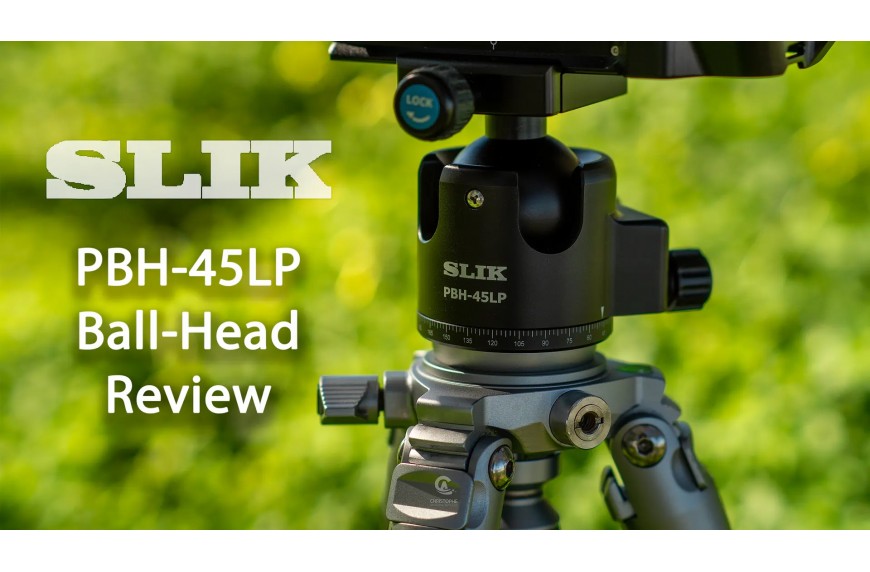 Our News
Our News
Slik PBH-45LP Ball-Head Review, by Christophe Anagnostopoulos
A long review of the recent Slik PBH-45LP ball-head, by the filmmaker and photographer Christophe Anagnostopoulos.
- févr. 13, 2023
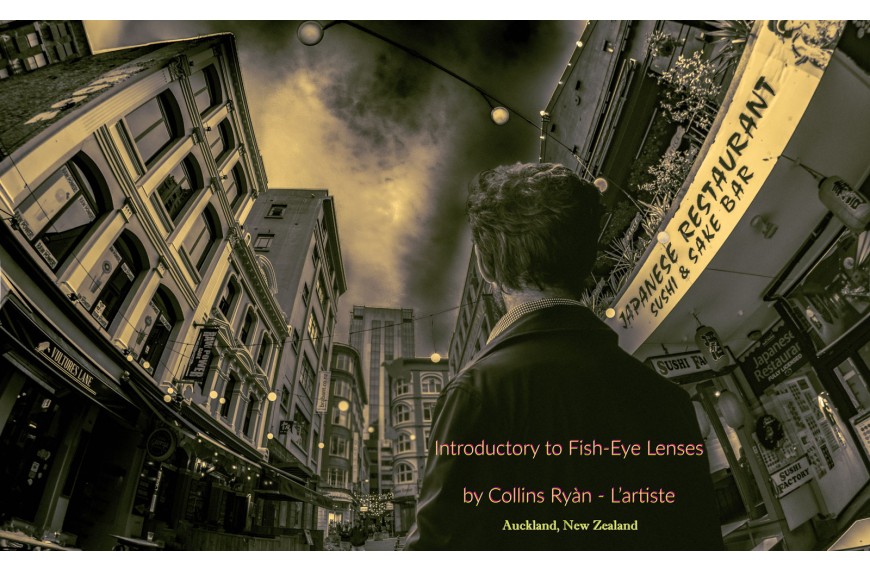 Our News
Our News
Introductory to Fish-Eye Lenses, by Collins Ryan
Photographer Collins Ryan lists in detail the consequences on the image geometry of the use of Tokina Fish-Eye lenses.
- juin 29, 2022
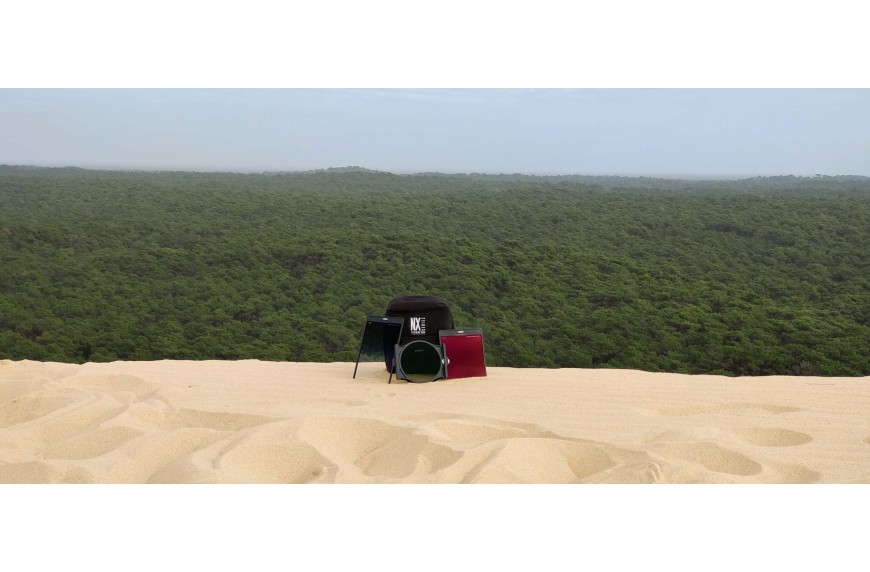 Our News
Our News
A year of shooting with Cokin Nuances Extreme filters and the NX-Series filter-holder
Landscape photographer and Cokin ambassador Michael Portillo offers feedback from over a year's experience with Cokin NX-Series equipment.
- avril 29, 2022
 Our News
Our News
Test des performances du Tokina Opera 50mm f/1,4 par le photographe Maxime Oudoux
Le photographe Maxime Oudoux a testé récemment l'objectif Tokina 50mm f/1,4 pour la réalisation d'astrophotographies et de paysages nocturnes.
- juil. 28, 2021
 Our News
Our News
Capturing history with SZX SUPER TELE 400mm F8 Reflex MF lenses
The photographer and Tokina ambassador Alessandro Di Lago challenges the Tokina SZX SUPER TELE 400mm F8 MF lens in shooting historical buildings and particularly architectural elements in the Italian city of Gorizia.
- févr. 03, 2021

